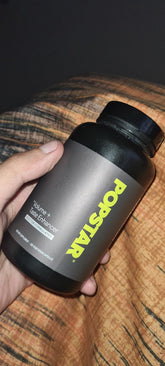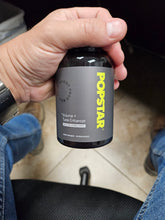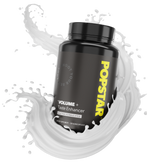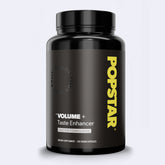The Lotus Position, traditionally known as Padmasana in yoga, is a well-known seated posture that involves crossing the legs and resting each foot on the opposite thigh. Though it might seem simple at first glance, the Lotus Position demands significant flexibility and stability in the hips, knees, and ankles. For men who often experience tighter hips due to factors such as habitual sitting, sports, or general muscle stiffness, learning and practicing the Lotus Position can contribute to enhanced pelvic mobility, improved posture, and a calm, focused mind. In this article, we will explore the health benefits of the Lotus Position, its step-by-step instructions, potential risks, and frequently asked questions to help you gain an in-depth understanding of this classic yoga pose.
Table of Contents
- What Is Lotus Position?
- Health Benefits of Lotus Position
- How to Practice Lotus Position
- Step-by-Step Guide to Achieving Lotus Position
- Common Questions About Lotus Position
- Potential Risks and Limitations
- References
What Is Lotus Position?
The Lotus Position is a seated posture in which the legs are crossed, and each foot rests on the opposite thigh. In yoga, it is often referred to as Padmasana. This posture is rooted in ancient traditions that emphasize meditation, mindfulness, and spiritual growth. It is commonly used as a foundational seated position for practices such as pranayama (breathing exercises), chanting, and meditation.
When performed correctly, the Lotus Position creates a stable tripod base formed by the pelvis and knees. This alignment promotes the natural curvature of the spine, facilitating an upright posture that supports deep, consistent breathing. Though simple in appearance, it can be challenging if you lack flexibility in the hips, knees, and ankles. Modifications, such as half lotus (Ardha Padmasana) in which only one foot is placed on top of the opposite thigh, can make this pose more accessible.
Throughout yoga history, the Lotus Position has been celebrated for its capacity to cultivate both mental and physical balance. This pose symbolizes rootedness and stability, connecting the practitioner to a calm yet focused state of mind. It is commonly seen in depictions of great yogis, monks, and other practitioners of meditation across many historical and cultural contexts.
For men, in particular, the Lotus Position can be beneficial in addressing tighter hips that may arise from routine sitting, athletic training, or other daily activities. Many men find it helpful for easing tension in the groin and hip flexors. Additionally, it can assist in alleviating lower back discomfort caused by improper sitting posture. While it requires time, effort, and patience to master, consistent practice can yield notable rewards.
Health Benefits of Lotus Position
The Lotus Position offers a range of physical and mental health benefits that can be particularly advantageous for men. Contrary to popular belief, improved flexibility is far from the only positive outcome of practicing this pose. Below are some notable benefits:
- Hip and knee flexibility: The Lotus Position places the legs in a way that encourages a deep opening of the hips. Over time, this can help loosen tight muscles, tendons, and ligaments around the hip joint, minimizing discomfort and enhancing performance in daily activities or workouts.
- Spinal alignment and posture support: An upright spine is crucial not only for performing the Lotus Position but also for ensuring balanced posture in everyday life. By reinforcing proper spinal alignment, the pose assists in mitigating slouching or hunching habits that can lead to chronic back pain.
- Modulated breathing: Seated with the spine upright, it becomes easier to engage in deep and controlled breathing. This can help calm the nervous system, reduce stress, and promote greater respiratory efficiency.
- Strengthening of the pelvic floor: The Lotus Position requires the engagement of the muscles surrounding your pelvis, helping with overall pelvic stability and potentially supporting sexual health and function.
- Enhanced circulation: Although the legs are folded, consistent practice can actually improve blood flow in the lower body by gradually reducing tension and any habitual constrictions in the hips and legs.
- Heightened mental clarity: The posture invites a meditative mindset. When the body is stable and aligned, it encourages a sense of internal stillness. This unobstructed posture can facilitate deeper introspection, better concentration, and stress relief, which can be particularly beneficial for men dealing with demanding work schedules or high-stress environments.
- Reduction in muscle stiffness: For men accustomed to intense physical training such as weightlifting, martial arts, or running, integrating Lotus Position and its variations can help in recovery by loosening tight connective tissues and preserving joint mobility.
By committing to a consistent practice schedule, you can experience these health advantages more fully. Diversifying your regimen with complementary stretches and yoga poses can amplify the gains while promoting overall fitness and wellness.
How to Practice Lotus Position
Before jumping into full Lotus Position, it is wise to prepare the body with preliminary exercises and warm-up movements. These actions can promote flexibility and build strength, especially if you’re new to yoga or have existing knee and hip concerns. Below are a few ways to gradually work towards a safe and effective Lotus Position:
- Regular hip openers: Integrate stretches like Pigeon Pose (Eka Pada Rajakapotasana), Bound Angle Pose (Baddha Konasana), and Lizard Pose (Utthan Pristhasana) into your routines. These postures gradually loosen the hips, aiding safe progression into Padmasana.
- Knee-friendly stretches: Gentle knee flexions and half squats can improve knee mobility. For those unsure about their knee health, focusing on mild stretches with minimal tension is key.
- Core engagement drills: An engaged core contributes to a stable trunk and a straighter spine. Planks, boat pose, and basic abdominal exercises can reinforce the support you need for a seated posture such as Lotus.
- Hamstring stretches: Even though the focus in the Lotus Position is predominantly on the hips, flexible hamstrings ensure overall ease in seated postures. Try simple forward bends like Uttanasana (Standing Forward Fold) or seated folds.
- Use of props: Yoga blocks and cushions can make your initial attempts at Lotus Position more comfortable. By propping yourself up or supporting the knees, you reduce strain while gradually improving flexibility.
Patience is essential. Pushing too hard, too fast can result in muscle strains or joint injuries. This is especially critical for men who are used to intense workouts but may not be as nimble when it comes to hip and knee flexibility. A balanced approach, blending mindful practice and gentle application of effort, is crucial for your long-term success in the Lotus Position.
Additionally, breathwork can be a major ally. Inhale when extending or lifting your spine, and exhale as you ease deeper into the pose. This synchronized breathing can alleviate tension, foster better awareness, and lay a strong foundation for more advanced meditative practices. Over time, consistent practice will help build the essential flexibility and stability needed to tackle the full Lotus Position.
Step-by-Step Guide to Achieving Lotus Position
This step-by-step guide provides detailed instructions that may help you find comfort and alignment in the Lotus Position. Remember that it might take weeks or months—or even longer—for your body to adjust to the demands of this posture. Always prioritize safety, and consider seeking guidance from a certified yoga instructor if you have underlying health conditions.
-
Start in a seated position:
Sit on the floor with your legs extended in front of you. If needed, place a cushion or folded blanket under your sitting bones to elevate the pelvis slightly. This initial boost often mitigates tension in the hips and lower back, making the posture more accessible.
-
Bend the right leg:
Gently draw your right knee toward your torso, rotating the hip outward. Place your right foot on your left thigh, ensuring that the sole of the foot faces the sky. Your ankle should remain as straight as possible to limit strain on the knee.
-
Bend the left leg:
Next, bend your left knee, bringing your left foot toward your right thigh. Repeat the outward rotation of the hip, carefully resting your left foot on your right thigh. Ensure both knees are as close to the floor as your flexibility allows.
-
Check your alignment:
Once your legs are crossed, both feet on opposite thighs, check the position of your pelvis. Roll the shoulders back and down, elongate the spine, and engage the core gently. The crown of your head should be aligned over your pelvis, and the chest should be open. Avoid slouching or arching excessively in your lower back.
-
Relax your hands:
Position your hands on your knees, palms facing up or down. In many meditation traditions, you can also form a mudra, such as resting the back of the hands on the knees with the index finger and thumb touching.
-
Focus on your breath:
Close your eyes or keep them softly open. Inhale length through your spine; exhale any tension in your hips and thighs. Maintain steady, controlled breathing, keeping the chest relaxed yet open. Allow your breath to ground you in the posture.
-
Set a time limit:
Begin with shorter intervals—perhaps 30 seconds to 1 minute—and incrementally extend the duration as your muscles adapt. Maintaining the posture for extended durations is not recommended until you feel entirely comfortable without strain in your joints.
Keep in mind that the journey to full Lotus may be gradual, and it’s completely normal to start with Half Lotus (Ardha Padmasana) or other variations. If you experience knee or hip pain, especially any sharp or stabbing sensation, slowly release the pose and seek professional advice. Consistency, patience, and gentleness are the cornerstone principles of a safe transition into the Lotus Position.
Common Questions About Lotus Position
How can Lotus Position improve men’s health specifically?
Men often grapple with tighter hips and hamstrings as a result of frequent sitting or sports-focused activities that emphasize strength over flexibility. The deep hip rotation and core engagement offered by the Lotus Position help open up the pelvic region, reinforce spinal alignment, and encourage improved posture. Combined, these benefits support a healthier lower back, enhanced blood circulation, and potential relief from certain forms of lower body stiffness commonly seen in men.
What if I can’t fully place both feet on opposite thighs?
If you find it difficult to get into a full Lotus Position, start with less intense variations to reduce strain on your joints. Half Lotus (one foot on the opposite thigh, the other foot below the opposite knee) or even a simple cross-legged pose (Easy Pose/Sukhasana) can serve as interim steps. Yoga blocks or a cushion under your hips can also make the position more accessible. Over time, consistent practice can help you gently progress.
Can the Lotus Position help with stress and anxiety?
Yes. The pose fosters a sense of groundedness and can promote a meditative mindset due to its stable base. Its natural alignment invites deeper, slower breathing, which calms the sympathetic nervous system. Many practitioners report decreased anxiety levels, improved focus, and an increased sense of wellbeing, making the Lotus Position a potent tool for combating stress when combined with mindfulness or meditation exercises.
Is it safe to practice Lotus if I have knee or hip injuries?
Consult a healthcare professional or experienced yoga instructor if you have a history of knee or hip issues. The Lotus Position places substantial pressure on the knee and hip joints, so conditions like meniscus tears, ligament strains, or hip bursitis require caution. Modifications and alternative postures may be recommended until you fully recover or develop the necessary flexibility and joint stability.
How long should I hold the Lotus Position?
The duration depends on your flexibility, comfort, and experience. Beginners can start with 30-60 seconds, gradually increasing the time as the body accommodates. Some advanced practitioners sit for extended meditation sessions. However, always listen to your body and avoid pushing beyond your comfort zone to prevent potential strain or injury.
Will I experience numbness in my legs or feet?
It is not uncommon to feel mild numbness or tingling, especially if you are new to this pose. This sensation often results from compressing certain nerves or blood vessels in the legs and feet. If numbness becomes intense or uncomfortable, gently release the posture and shake out your legs. Over time, you might find it easier to remain in the pose without adverse sensations.
Is Lotus Position primarily for meditation?
While widely recognized as a classic meditation posture in various spiritual traditions, the Lotus Position serves many purposes beyond meditation. It is an excellent pose for developing lower-body flexibility, enhancing proprioception (awareness of the body in space), and strengthening the spine. In yoga practice, it often concludes sessions, pairing well with breathwork or chanting. Its versatility makes it a valuable addition to any holistic wellness routine.
Can it help with posture at work or during daily activities?
Absolutely. Over time, practicing the Lotus Position encourages a naturally upright spine and an engaged core. By training these muscle groups and body alignment habits, you may notice improved posture in daily life—at the office, in your car, or during leisure activities. Additionally, better posture can help alleviate lower back strain, a common complaint among men with sedentary or desk-focused jobs.
Is there an ideal time to practice the Lotus Position?
There is no single "best" time universally, but many practitioners enjoy practicing the pose in the mornings to energize the body and mind, or in the evenings to wind down and release tension. Pairing the pose with mindful breathing or meditation can be particularly beneficial, helping you either set a calm tone for the day or relax more thoroughly after work.
Potential Risks and Limitations
Though the Lotus Position can offer a myriad of benefits, it also presents certain risks if performed incorrectly or too hastily, especially for those unaccustomed to deep hip flexion. Below are some limitations and considerations to keep in mind:
- Knee strain: The rotational force on the knees in this posture can be significant, making it crucial to ensure that hip flexibility carries most of the movement. Any pain in the knees is a signal to ease off or try a modified pose.
- Hip discomfort: Individuals with pre-existing hip issues should approach the Lotus Position with care. Tight or inflamed hip joints might experience added stress, so it’s vital to take it slow and use props when necessary.
- Ankle and foot complications: A misaligned foot can place undue strain around the ankles, Achilles tendon, or arches of the feet. Wearing supportive socks or applying slight support under the ankles may help alleviate some tension.
- Joint hypermobility: If you are naturally very flexible or hypermobile, you might sink deeply into the pose without adequate muscular stabilization. This could compromise joint integrity over time. Focus on harnessing your core and stabilizing muscles.
- Potential for lower back arching: Beginners may tilt their pelvis forward excessively or overarch the lower back. This misalignment can translate into discomfort. Engaging the lower abdomen and elongating the spine can counteract this issue.
- Insufficient warm-up: Attempting the full Lotus Position without adequate preparation can lead to pulling sensations or strains. Always warm up with dynamic stretches and less intense hip openers before attempting Shin-to-Thigh placement.
Remember that the Lotus Position is not a mandatory pose in yoga or in general physical fitness. Many alternatives exist for those who cannot comfortably adopt this posture. Prioritize comfort and safety to cultivate a more positive, sustainable relationship with your body.
References
- Satyananda Saraswati, Swami. "Asana Pranayama Mudra Bandha." Yoga Publications Trust.
- Iyengar, B.K.S. "Light on Yoga." Schocken Books.
- McCall, Timothy. "Yoga as Medicine: The Yogic Prescription for Health and Healing." Bantam.
- National Institutes of Health (NIH). (n.d.). Yoga: In Depth.
https://www.nccih.nih.gov/health/yoga-in-depth - Yoga Journal. (n.d.). Lotus Pose (Padmasana).
https://www.yogajournal.com/poses/lotus-pose/
















































